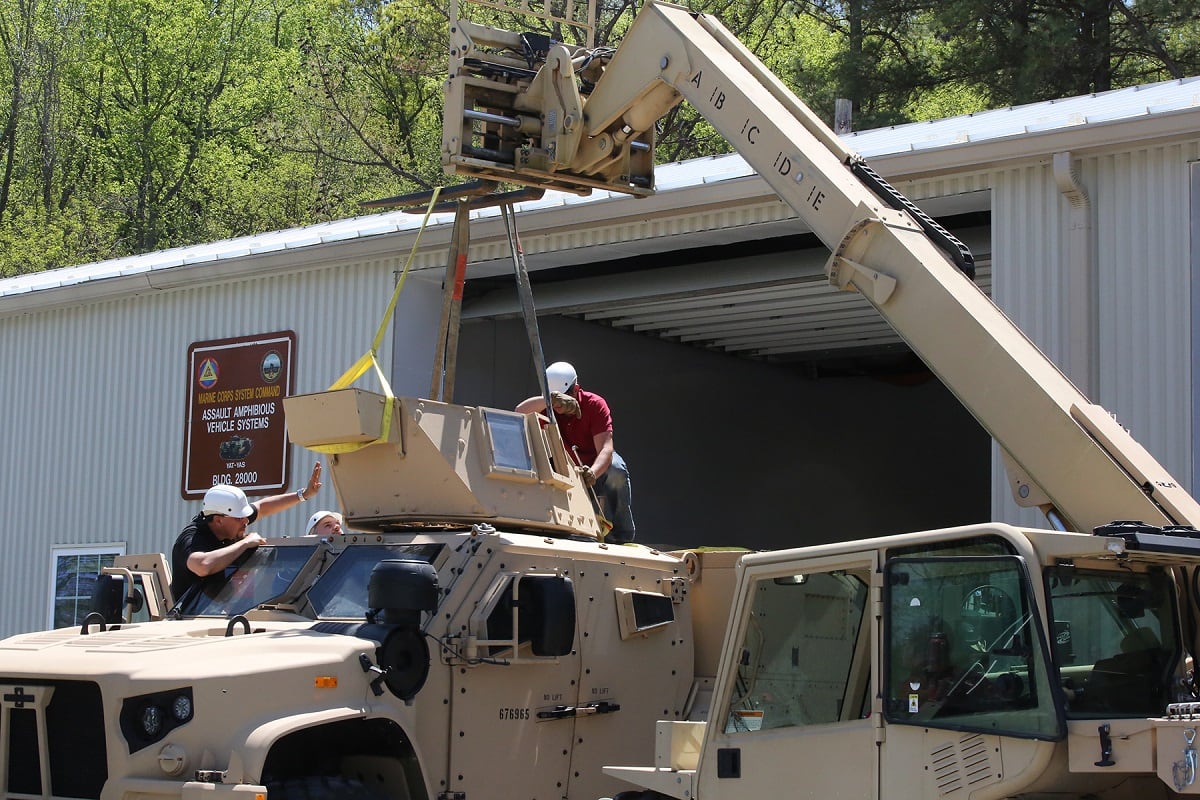The Humvee has long been derided as a “death trap” by veterans of the Iraq and Afghanistan wars who were subjected to the onslaught of roadside bombs that easily tore through the small lightly armored vehicles.
And now the Humvee’s lore is likely to live on as the Corps looks to scavenge parts from the small tactical vehicle to service its new expensive Joint Light Tactical Vehicle, or JLTV. It’s a move the Corps says could save more than $100 million.
According to a recent command release, the Corps is harvesting Gunner Protection Kits, or GPK, and other parts to help cut costs and increase “survivability” for the new JLTV.
“The harvesting strategy was developed by the JLTV Joint Program Office in 2012 as part of our efforts to meet affordability metrics for the program,” Andy Rodgers, program manager for Light Tactical Vehicles in Program Executive Officer Land Systems, said in a command release. “Our collaboration with [Marine Corps Systems Command’s] Program Manager Infantry Weapons is key to that strategy.”
The gunner’s kits are basically rooftop turrets that can mount crew served weapons and provides added protection to the operator.

The Corps is sinking a lot of cash in the new and improved tactical vehicle known as the JLTV.
This year’s annual defense legislation includes just over $607 million to procure 1,642 JLTVs for fiscal year 2019.
The JLTV is an upgrade from its predecessor, boasting a mine resistant V-shaped undercarriage and better armor. It’s also transportable by the Corps’ CH-53 heavy lift helicopter.
In total, the Corps plans to buy about 9,000 JLTVs, but those will only replace half of the Corps’ 17,000 Humvees.
Which means the Humvee is still in for the long haul, even as the Corps scavenges its parts for the JLTV.
The Corps is likely to continue operating the Humvee until at least 2030.
While the Corps harvests the GPK from the Humvee, Marine Corps Systems Command submitted a request for information in late May from industry regarding the design and production of the Reducible Height Gunner Protection Kits, or RHGPK.
According to the posting on the government’s business opportunities portal, the Corps is in need of a GPK that can be easily reduced in height for ease of transportation.
“To improve the GPK's and associated tactical vehicle fleets' transportability, there is an emerging requirement for a RHGPK that would enable GPK-equipped vehicles to enter restricted height deck spaces aboard naval ships without removing the GPK,” the posting stated. “The RHGPK will restore significant deck space lost when installing the GPK, reduce unit preparation time before boarding naval ships, and enable vehicles employing infantry weapons to arrive at amphibious landing zones with a GPK ready for combat operations.”
And the Corps wants the RHGPK to be compatible with the JLTV, logistics vehicle systems replacement and the medium tactical vehicle replacement.
Shawn Snow is the senior reporter for Marine Corps Times and a Marine Corps veteran.



